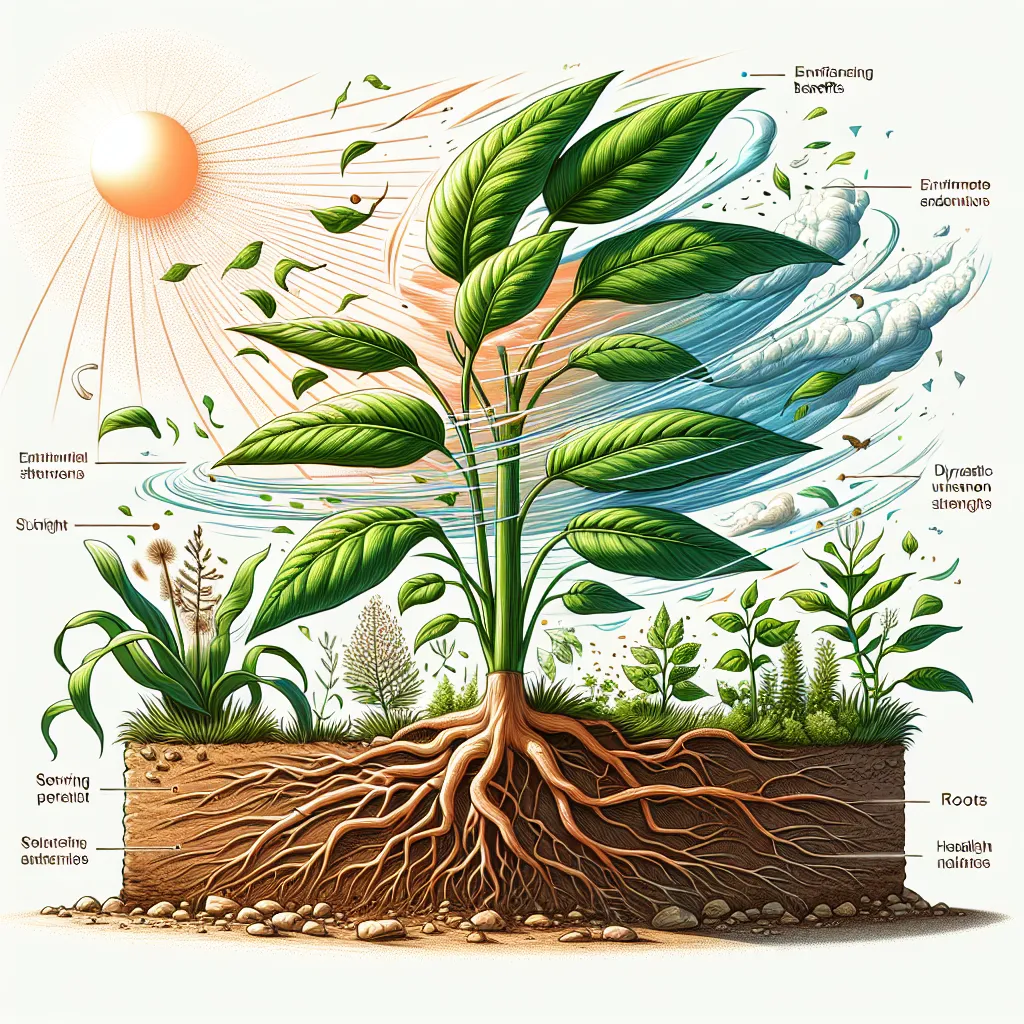The sessile lifestyle of plants is a marvel of adaptability and survival. While they can’t move like animals to escape threats, plants have developed dynamic metabolic solutions to thrive in their environments. This adaptability is largely due to their ability to produce a diverse array of phytochemicals, which serve as their defense mechanism against pests and environmental stressors.

Understanding the Sessile Lifestyle
What Does “Sessile” Mean for Plants?
Plants are often described as sessile organisms because they are anchored to one spot. But this doesn’t mean they’re passive. Instead, they exhibit remarkable resilience and flexibility in response to their surroundings. Their sessile nature has driven the evolution of complex metabolic pathways.
Dynamic Metabolic Solutions
Plants have perfected the art of metabolic plasticity. This means they can adapt their metabolic processes to produce specific phytochemicals as needed. These compounds help plants defend against herbivores and pathogens, communicate with other plants, and adapt to changes in their environment.
Key Components of Plant Metabolism:
- Phytochemicals: These are organic compounds that have various roles such as defense, attraction, or signaling.
- Cytochrome P450: A superfamily of enzymes crucial for synthesizing these phytochemicals.
The Role of Phytochemicals
Phytochemicals are vital for plant survival. They help in defense, communication, and adaptation. For instance, when a plant is attacked by herbivores, it can produce specific compounds to deter the predator. This is akin to having an on-demand pharmacy at their disposal.
The Complexity of Plant Metabolism
Metabolons: Nature’s Assembly Lines
Metabolons are enzyme complexes that enable efficient metabolic channeling. They ensure that substrates are passed directly from one enzyme to the next, minimizing loss and maximizing efficiency. It’s like a well-oiled factory assembly line, where each worker (enzyme) knows their exact role.
Benefits of Metabolons:
- Efficiency: Direct transfer of substrates between enzymes.
- Specificity: Reduces unwanted interactions and side reactions.
- Adaptability: Can be quickly assembled or disassembled based on the plant’s needs.
Compartmentalization in Plant Cells
Compartmentalization is another strategy plants use to manage their metabolic processes. By organizing specific biosynthetic pathways into distinct cellular compartments, plants can avoid metabolic cross-talk and store high concentrations of phytochemicals safely.
| Compartment | Function |
|---|---|
| Plastids | Photosynthesis and synthesis/storage of pigments |
| Vacuoles | Storage of nutrients and waste, maintain turgor pressure |
| Endoplasmic Reticulum | Synthesis of proteins and lipids |
Liquid-Liquid Phase Separation
This process allows plants to form dense biomolecular condensates, which can store and activate phytochemicals quickly in response to threats. It’s like having a secret stash of weapons ready to use at a moment’s notice.
Implications for Synthetic Biology
Harnessing Plant Metabolism
The intricate metabolic networks of plants offer a treasure trove of possibilities for synthetic biology. By understanding and replicating these pathways, we can engineer plants to produce valuable compounds more efficiently.
Potential Applications:
- Pharmaceuticals: Production of plant-based medicines.
- Agriculture: Development of crops with enhanced resistance to pests.
- Biotechnology: Synthesis of novel compounds for industrial use.
The Future of Plant-Based Production
As we delve deeper into the metabolic capabilities of plants, the potential for innovation is immense. Imagine a future where we can tailor plants to produce specific compounds on demand, much like a custom-built machine.
Conclusion
The sessile lifestyle of plants, far from being a limitation, has fostered a level of metabolic sophistication that is both fascinating and inspiring. By unlocking the secrets of plant metabolism, we open the door to a new era of sustainable production and innovation.
The integration of these natural processes with modern technology, like AnySqft’s AI-driven platform, can revolutionize how we approach agriculture and biotechnology. It’s not just about surviving; it’s about thriving in harmony with nature.
Understanding Sessile Organisms
Sessile organisms, like plants, are anchored in one place and cannot move. Instead, they exhibit remarkable adaptive strategies to survive and thrive in their environments.
Key Features
- Metabolic Plasticity: Ability to produce diverse phytochemicals for defense against herbivores.
- Compartmentalization: Organizing cellular processes to optimize metabolic efficiency.
- Dynamic Responses: Quick activation of stored compounds via liquid-liquid phase separation.
Harnessing the power of plant metabolism through innovative tools like AnySqft can revolutionize agricultural practices, making them more efficient and sustainable.
👉 Explore how AnySqft can transform your approach to agriculture: Visit AnySqft